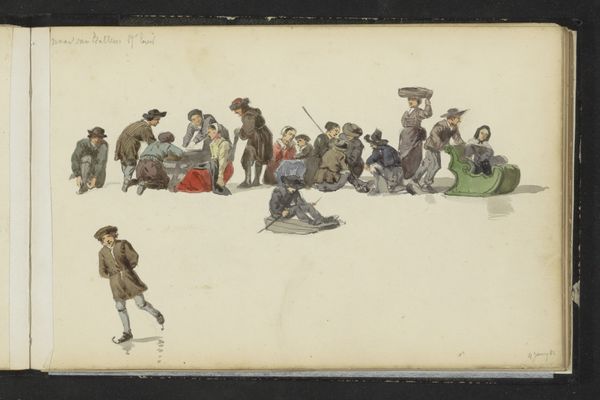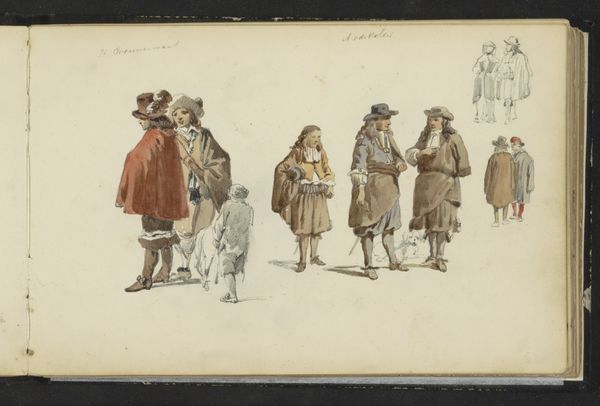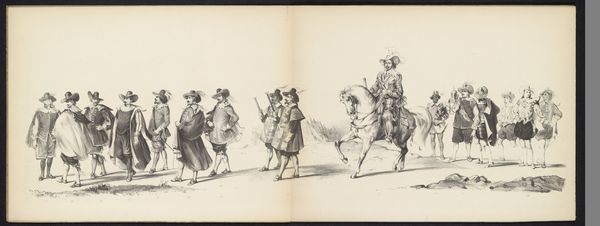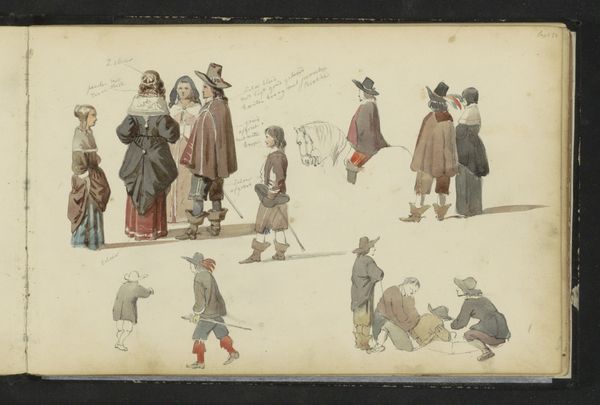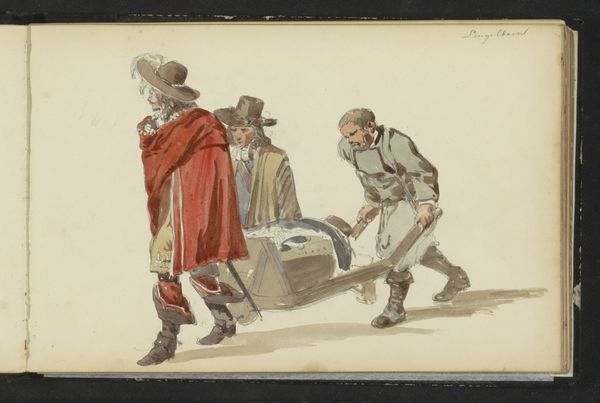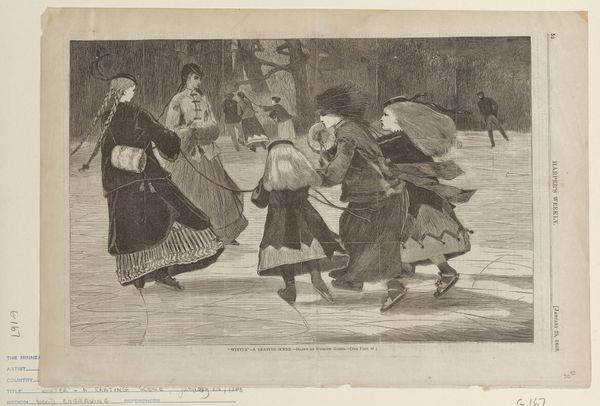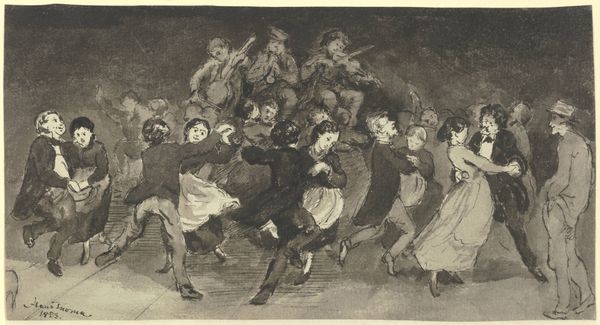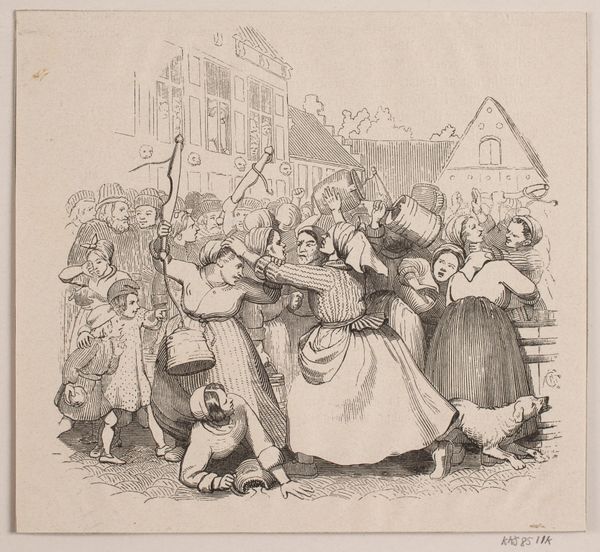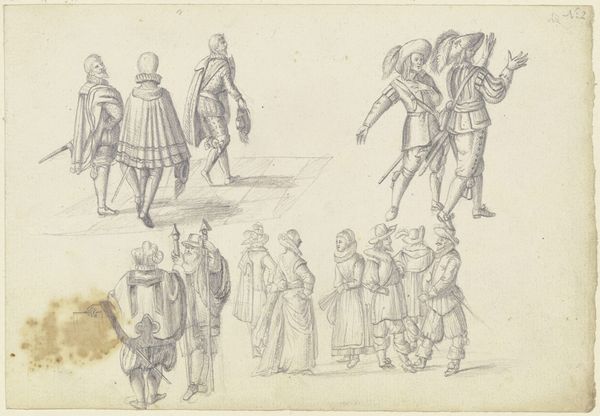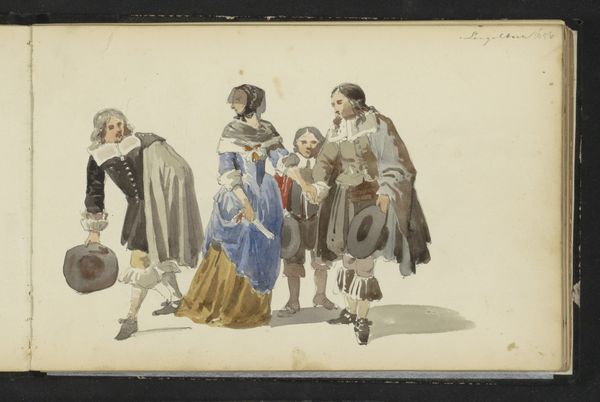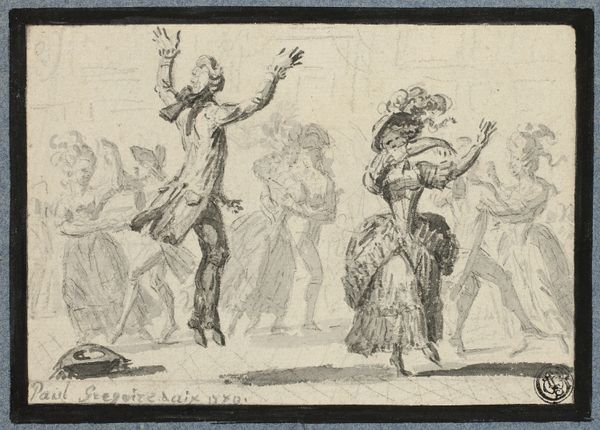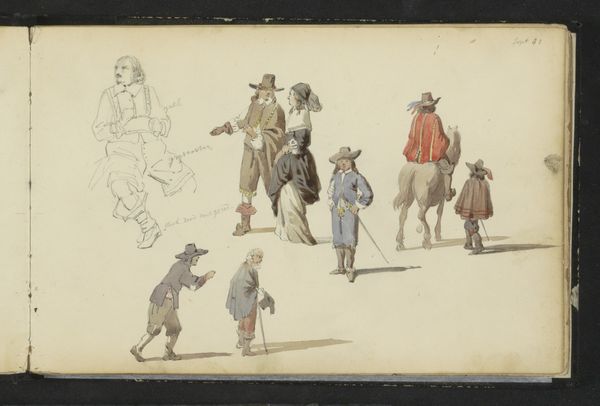
Copyright: Rijks Museum: Open Domain
Editor: This work, “Figuren in zeventiende-eeuwse kleding”, or “Figures in Seventeenth-Century Clothing,” is a drawing in watercolor, pencil, and colored pencil on paper, possibly from 1882, by Cornelis Springer. It looks like a social scene, maybe even a snapshot of daily life, with figures ice-skating. How would you interpret it? Curator: Seeing Springer use these combined media – watercolor, pencil, and colored pencil – allows us to consider artistic labor and material production in a new light. We must ask: How does this particular combination of readily available and relatively inexpensive materials inform our understanding of 19th-century art markets and consumption? Editor: Interesting. So, instead of focusing on the image itself, you are more interested in how he made it and why he used these materials. Curator: Exactly! Consider the accessibility of watercolor versus the more precious medium of oil paint. Does the choice democratize art-making, or perhaps reflect a changing role for drawings outside academic tradition? We also should consider the mass production of paper in the 19th century, and what affect such innovation in material sourcing has on an artist's output and choice of representation. Editor: I never thought about that! Now I'm wondering if the clothing suggests a specific socio-economic class engaging in leisure, or a deliberate reconstruction for the consumption of a certain 19th century art audience. Curator: Precisely. Springer's work provides insights into both 17th and 19th century material culture and its consumption and production. Thank you, these kinds of consideration are necessary to re-evaluate artistic creations.
Comments
No comments
Be the first to comment and join the conversation on the ultimate creative platform.
